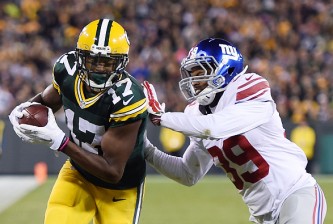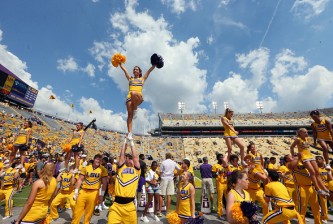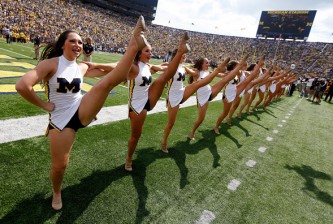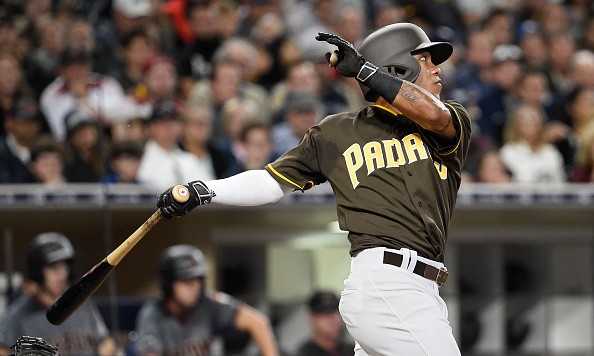It’s been well established around these parts that baseball is a marathon, not a sprint. Playing 162 games in about 180-ish days over the course of six months can be a grind. It’s important to stay mentally strong, regardless of the situation. If a player gets their season off to a bad start, that doesn’t necessarily mean he’s doomed to have a rough year. It’s an important fact to keep in mind for baseball bettors making wagers at https://www.online-betting.org/ and other online sports books. The same goes for players who get their respective seasons off to a tremendous start — there’s also no guarantee of having a career year.
However, every ballplayer in history would take a fast start with open arms. The following 10 players each had a rough March/April last year and are likely hoping to avoid a repeat of that in 2019.
All of the stats listed will be how each player produced through April 30th, 2018.
Anthony Rizzo, Chicago Cubs
.149/.259/.189, 1 home run, 9 RBI, 32 wRC+ in 85 PA
When you look at how Anthony Rizzo’s 2018 ended up, he had a stellar year for the Cubs, which is business as usual in recent years. Although his 2.9 fWAR broke a streak of four straight years with at least 4.0, he still produced a 125 wRC+ with 25 homers and 101 RBI.
This slow start was the only time he experienced that long of a slump last year, too. He didn’t finish any month with a wRC+ lower than 108 once the calendar turned from April to May.
With a division as stacked as the National League Central, the Cubs need their big guns firing on all cylinders. While the regular season is indeed a marathon, digging too much of a hole in April may make it too hard to get out of by the time summer turns into fall.
One trend Rizzo will try to continue resides in his plate discipline. He’s produced a walk rate of at least 10.5% in six consecutive seasons while never striking out more than 18.8% of the time. After posting a 16.0% strikeout rate in 2016, he’s set new single-season career-best marks each of the last two years, culminating with a 12.0% clip in ’18.
Danny Duffy, Kansas City Royals
5.40 ERA, 1.45 WHIP, 19.7% strikeout rate, 9.9% walk rate in 31.2 IP
Duffy had a tough start to 2018 and never found a way to completely pull himself out of that particular hole. After struggling through April, he followed that up with even worse results in May (6.00 ERA and .396 wOBA against) before finding success in June and July (3.34 ERA in 67.1 innings).
Of course, that was sandwiched by a rough finish, which included a 7.04 ERA over his final 23 frames.
While the Royals are rebuilding, 2019 is important for Duffy to get back on track once he’s fully healthy again. He’s under contract through 2021 and could turn into an intriguing trade-deadline acquisition if he can regain his 2016-17 form.
One thing he’ll need to do is get his slider under control. During that two-year stretch where he became a dependable starter for KC, opposing hitters didn’t muster more than a 70 wRC+ against the pitch in either season. In 2018, that number jumped up to 157, while his usage of the offering went down (29.4% in ’17 to 16.9% in ’18).
Ian Desmond, Colorado Rockies
.178/.229/.337, 4 homers, 13 RBI, 35 wRC+ in 109 PA
The thin air at Coors Field hasn’t helped Desmond amp up his offensive stats at all. Believe it or not, he’s actually been worse at home than on the road over the past two years.
No, seriously: in 2017, he posted a 102 wRC+ on the road and a 35 wRC+ at home. Those numbers changed slightly last year, with his production coming in at 96 as a visitor and 66 at home. His overall lack of production (-1.5 fWAR since the start of ’17) was likely a huge reason why Colorado signed Daniel Murphy to play first base, shifting Desmond back to the outfield.
The most stark difference between these past two years and the rest of his career is his ground-ball rate. Desmond has always had a more ground-ball approach, but his 62.3% grounder rate since the start of ’17 is easily the highest in baseball among players with at least 950 plate appearances.
Chris Archer, Pittsburgh Pirates
6.61 ERA, 1.59 WHIP, 24.5% strikeout rate, 7.5% walk rate in 32.2 IP
Although it happened at the non-waiver trade deadline last year, Archer gets the benefit of starting this season in a place that likely still feels new. As mentioned with Rizzo and the Cubs, the Pirates hold residence in a loaded NL Central. The only difference? They didn’t make any significant acquisitions to move their performance needle like some of their divisional foes did.
A number of projection models have them hovering around .500 and not being in the playoff picture, which isn’t surprising. If they want to catch people off guard, they need to milk as much value out of their roster as possible. That starts with Archer, who is the oldest of Pittsburgh’s projected starting five, and he’s certainly a hurler that brings plenty of experience to the table.
The 30-year-old right-hander will be looking to bring his hard-hit rate back down to what he did earlier in his career — after never going higher than 32.8%, it’s been 39.4% each of the last two seasons. That’s also been paired with an elevated line-drive rate (22.0% in ’17, 23.0% in ’18).























